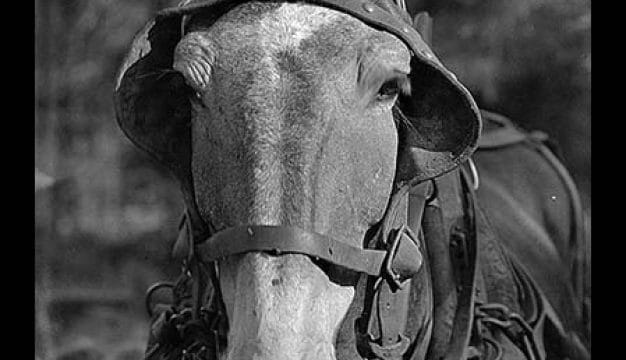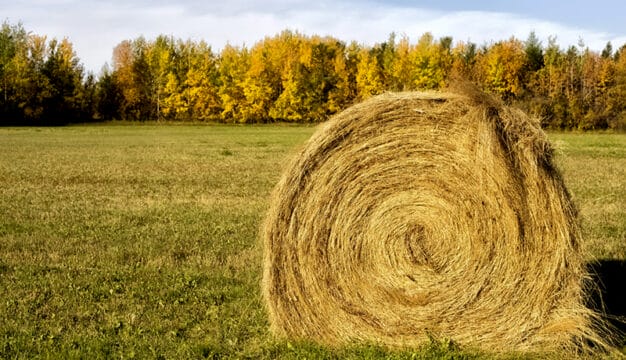Imported Fire Ants
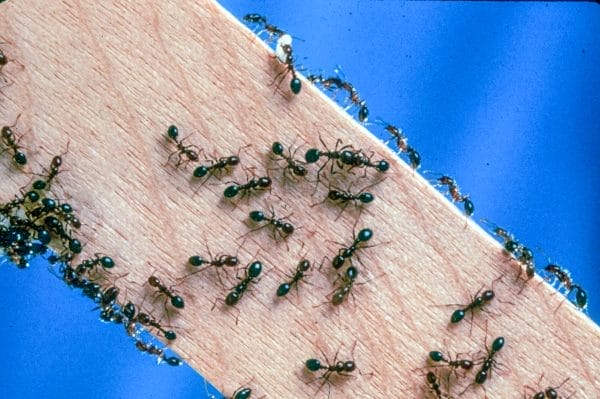 Fire Ants
The distinctive earthen mounds that mark the nests of imported fire ants are a fixture in the Alabama landscape. The stinging pests, native to South America, first entered the United States through the port of Mobile. It is thought that the black imported fire ant (Solenopsis richteri Forel) arrived about 1918 and the more aggressive red imported fire ant (Solenopsis invicta van Buren) made its first appearance in Alabama between 1933 and 1941. When the U.S. Department of Agriculture conducted its first official survey of these pests in 1953, they had spread to 10 states. Imported fire ants are found in all of Alabama’s 67 counties and have made their way to points as far-flung as California and Arizona. The black imported fire ant is now generally found in northwestern Alabama. The red imported fire ant lives throughout south and east-central Alabama. A hybrid between the two species is found in much of the northern and west-central portion of the state. Native fire ants are black and are smaller than the imported pests; they have been greatly reduced in their range because they are unable to compete with the two species of imported fire ants.
Fire Ants
The distinctive earthen mounds that mark the nests of imported fire ants are a fixture in the Alabama landscape. The stinging pests, native to South America, first entered the United States through the port of Mobile. It is thought that the black imported fire ant (Solenopsis richteri Forel) arrived about 1918 and the more aggressive red imported fire ant (Solenopsis invicta van Buren) made its first appearance in Alabama between 1933 and 1941. When the U.S. Department of Agriculture conducted its first official survey of these pests in 1953, they had spread to 10 states. Imported fire ants are found in all of Alabama’s 67 counties and have made their way to points as far-flung as California and Arizona. The black imported fire ant is now generally found in northwestern Alabama. The red imported fire ant lives throughout south and east-central Alabama. A hybrid between the two species is found in much of the northern and west-central portion of the state. Native fire ants are black and are smaller than the imported pests; they have been greatly reduced in their range because they are unable to compete with the two species of imported fire ants.
Imported fire ants attract attention because they sting and because they build large, unsightly mounds. Most people find the stings to be painful and are irritated by the small, itchy, white bumps that remain for a week or more after the stinging incident occurs. A few people are allergic to fire ant venom and can die from anaphylactic shock. The mounds can damage mowing and harvesting equipment. Fire ants cause large losses when they get into sensitive electrical equipment, such as air conditioning units or transformer boxes. Their impact on other species, including insects, birds, and mammals, is still being evaluated. The greatest negative impact from fire ants seems to be on ground-nesting birds, whose chicks are vulnerable to attack by them. Imported fire ants, however, have been shown to have a positive effect in cotton and sugar cane production because they prey on important pests, such as caterpillars.
Fire Ant Biology
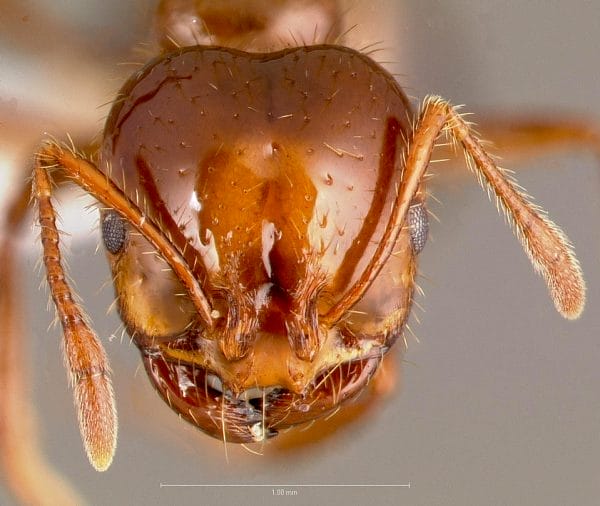 Red Imported Fire Ant
Imported fire ants, like all ants, are related to wasps and bees. There are 154 resident ant species in Alabama. They are social insects that live in densely excavated underground tunnels that often extend above ground as mounds. These mounds typically appear in cool or moist weather and may be completely absent during Alabama’s hot, dry summers. Fire ants, like all insects, are exothermic (commonly known as cold blooded) and thus are most active when outside temperatures are between 70 and 90 degrees. The ants move up into the mound or down into the tunnels in the soil in order to stay within this optimum temperature range.
Red Imported Fire Ant
Imported fire ants, like all ants, are related to wasps and bees. There are 154 resident ant species in Alabama. They are social insects that live in densely excavated underground tunnels that often extend above ground as mounds. These mounds typically appear in cool or moist weather and may be completely absent during Alabama’s hot, dry summers. Fire ants, like all insects, are exothermic (commonly known as cold blooded) and thus are most active when outside temperatures are between 70 and 90 degrees. The ants move up into the mound or down into the tunnels in the soil in order to stay within this optimum temperature range.
Most of the imported fire ants in Alabama occur in colonies that consist of a queen and her offspring, which are mostly sterile, wingless females that conduct the work of the colony. This work includes tending to the queen and the immature fire ants (called the brood), digging and maintaining the tunnels, foraging for food, and defending the colony. Established colonies may include several hundred thousand worker ants that vary in size from approximately 1/8 inch to 1/4 inch in length. The colony persists for as long as the queen lives, which usually ranges from three to five years. A large proportion of the colony may consist of winged fertile males and females. On the day after a rain, these “flying ants” leave the colony on mating flights. They can land by the hundreds on swimming pools, ponds, and other reflective surfaces.
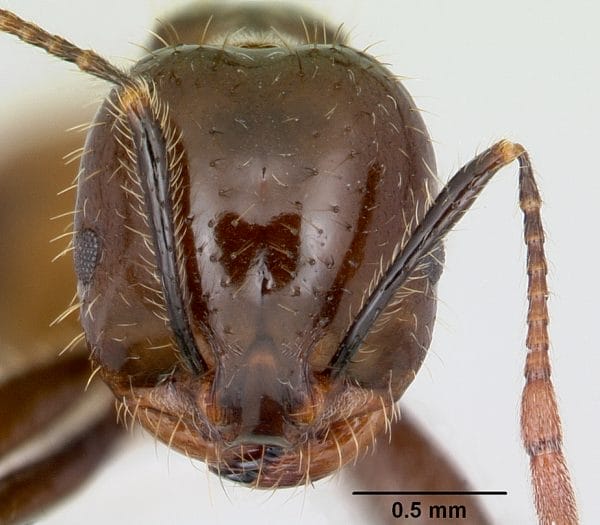 Black Imported Fire Ant
Fire ant colonies generally occur in a concentration of about 40 to 80 colonies per acre. Some fire ants live in single-queen, or monogyne, colonies and are very territorial. They recognize ants from their own nests by special scents that they emit. In a few areas in Alabama, another genetic form of imported fire ant lives in colonies containing multiple queens (polygyne colonies), each capable of laying eggs that will develop successfully. In these areas, there may be from 200 to 600 mounds per acre, with each colony inhabiting a number of mounds. The workers in these colonies are not territorial.
Black Imported Fire Ant
Fire ant colonies generally occur in a concentration of about 40 to 80 colonies per acre. Some fire ants live in single-queen, or monogyne, colonies and are very territorial. They recognize ants from their own nests by special scents that they emit. In a few areas in Alabama, another genetic form of imported fire ant lives in colonies containing multiple queens (polygyne colonies), each capable of laying eggs that will develop successfully. In these areas, there may be from 200 to 600 mounds per acre, with each colony inhabiting a number of mounds. The workers in these colonies are not territorial.
Imported fire ant workers search far and wide for a variety of food items, including live insects, dead animals and plants, seeds, and nectar. They “farm,” or protect, aphids, which excrete a sugary substance called honeydew that the ants eat. Workers travel to and from the nest via a tunnel that extends several feet or meters away from the nest. When ants return to the nest, they then regurgitate liquid food into the mouths of other worker ants, which in turn pass it around to the brood (larvae), the queen, and other workers. During this process, called trophallaxis, various behavior-regulating and growth-regulating chemicals can be transmitted from one ant to another. Solid food can only be digested by the oldest larvae. After it is digested, it too is shared with the rest of the colony. Fire ants respond to the smell of special chemicals called pheromones, many of which are produced by the queen. They can feel vibrations and the touch of other ants. They also make characteristic sounds. If they are above ground, they can see with their compound eyes.
Environmental Impact
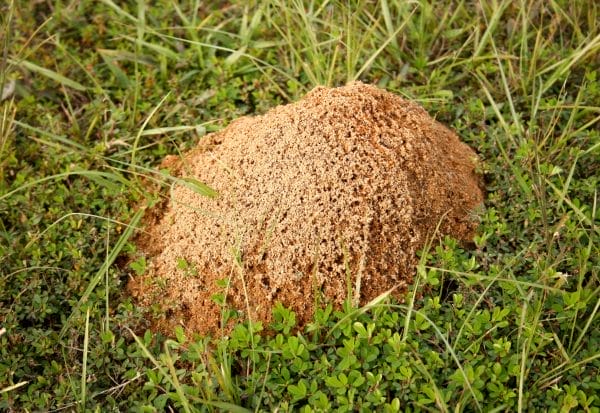 Fire Ant Mound
It is impossible to eradicate fire ants in Alabama now that they are established throughout the entire Southeast, but there are various ways to make imported fire ants easier to live with. The methods used are site-specific. Fire ant control materials include baits and contact insecticides. Broadcast application of fire ant bait frequently is the most cost effective and environmentally sound method of control. Treatment of individual mounds with a contact insecticide or bait is useful only if a few colonies need to be eradicated. This method is frequently used in conjunction with broadcast-applied fire ant baits as a two-step method of fire ant management. Broadcast application of insecticides that persist in the environment is the most expensive control method, but it is appropriate in areas where the highest level of fire ant control is needed. Such efforts would be needed, for example, in areas where hypersensitive people might be exposed to fire ants or where endangered species nest.
Fire Ant Mound
It is impossible to eradicate fire ants in Alabama now that they are established throughout the entire Southeast, but there are various ways to make imported fire ants easier to live with. The methods used are site-specific. Fire ant control materials include baits and contact insecticides. Broadcast application of fire ant bait frequently is the most cost effective and environmentally sound method of control. Treatment of individual mounds with a contact insecticide or bait is useful only if a few colonies need to be eradicated. This method is frequently used in conjunction with broadcast-applied fire ant baits as a two-step method of fire ant management. Broadcast application of insecticides that persist in the environment is the most expensive control method, but it is appropriate in areas where the highest level of fire ant control is needed. Such efforts would be needed, for example, in areas where hypersensitive people might be exposed to fire ants or where endangered species nest.
Other ant species are good predators of fire ants. Established landscapes may have few fire ant colonies owing, in part, to the presence of other ant species. Fire ant workers themselves are excellent predators of winged fire ants. In addition, parasites such as microsporidians, neogregarines, and viruses that live inside fire ants may reduce their competitiveness. Three species of parasitic flies (Pseudacteon sp., Diptera: Phoridae) have been purposely introduced into Alabama as part of the Alabama Fire Ant Management Program. These flies are thought to be important in regulating fire ant populations in South America. It is hoped that they will reduce the overall level of fire ants as they spread across Alabama.
Further Reading
- Tschinkel, Walter. The Fire Ants. Cambridge, Mass.: Harvard University Press, 2006.
